As the old adage goes, it takes two hands to clap and therefore when examining the failures of the Central Tibetan Administration (CTA; based in Dharamsala, North India), it is merely due diligence to examine their closest advisors too and one of the Tibetan leadership’s closest advisors is the spirit Nechung. Nechung is the common name for the State Oracle of Tibet who takes trance of a deity Pehar and / or Pehar’s spirit-ministers.
In relying on Nechung, what we see is a totally unprecedented situation not witnessed anywhere else in the world. In this instance, a so-called democratically-elected leadership relies heavily on an undemocratically-appointed Oracle to advice, guide, shape and influence the entire community’s and government’s policies. Those with even a passing, Hollywood-induced familiarity of Tibet will be aware of their leadership’s reliance on oracles for spiritual matters like identifying candidates for the next Dalai Lama.
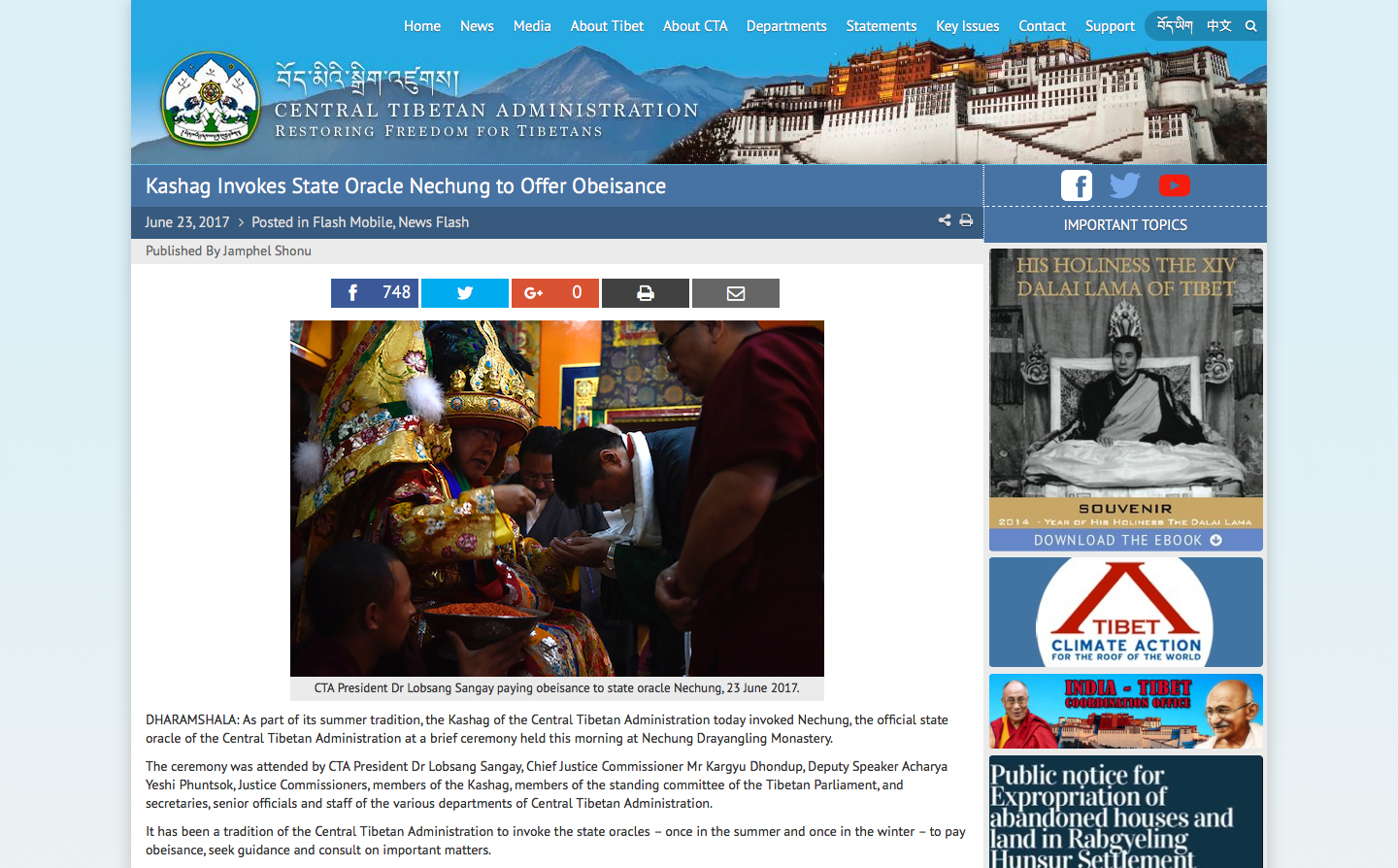
What they will be less familiar with is the depth of reliance from the Tibetan leadership on all matters political. If people assume that the Tibetan leadership’s reliance on Nechung for political decisions is just a one-off, they could not be further from the truth. And yet, despite this immense reliance on the Nechung Oracle for both secular and spiritual advice, it has been proven time and again just what a dangerous folly it is to implement advice given by the Nechung Oracle.
The Unreliability of the Nechung Oracle
The Nechung Oracle is known for his long history of inaccurate proclamations, which include (but are not limited to):
- Prescribing the wrong medication to the 13th Dalai Lama, which hastened his passing. In his book Portrait of the Dalai Lama which documents the life of the 13th Dalai Lama, Sir Charles Bell wrote, “On this occasion, the Nechung oracle said that the Dalai Lama should take a medicine known as “the seventeen heroes for subduing colds” (chamjom pawo chupdun) and himself prepared the medicine in a cup with water. Most respondents report that the Dalai Lama refused the dose and that the state oracle literally had to pour it into his mouth. The Dalai Lama’s condition immediately deteriorated, and by noon he was unconscious. He never said another word.” Because his advice resulted in this catastrophe, the deity Nechung was flogged while taking trance in the Oracle.
- Giving disastrously wrong advice to the Tibetans during the 1904 British incursion into Tibet. When an Expeditionary Force led by Lt. Col. Sir Francis Younghusband began to advance on Central Tibet after failed negotiations, the Nechung Oracle duly proclaimed that the British Army would reach Central Tibet. He then predicted that the Tibetan army would be victorious. True to his prediction, the British did arrive in Lhasa but unlike in his prophecy, they easily defeated the poorly-equipped Tibetans. The result was the Dalai Lama fleeing Tibet’s capital city, Lhasa, along with the Nechung Oracle. Upon his return when the British had departed, the Nechung Oracle was summarily dismissed from his position as the State Oracle.
- Wrongly and dangerously advising His Holiness the 14th Dalai Lama to remain in Tibet during the political turmoil of 1959. It was later discovered that there had been a plot to arrest and harm the Dalai Lama and many other religious leaders. Had Nechung’s advice been followed, it is likely that the 14th Dalai Lama would have been harmed. Instead, the Dalai Lama followed Dorje Shugden’s insistent advice that the Dalai Lama leave Tibet immediately for India. Dorje Shugden also specified the exact time and day of departure, the escape route, and also gave further instructions on what to do to ensure a successful escape. This entire incident was well-documented by the very people who accompanied the Dalai Lama on his escape into exile (see video below).
- Time and again, Nechung has wrongly proclaimed that exiled Tibetans will return to their homeland. He issued such proclamations in 1986, 1987, 1995, 1997 and 2012. The most recent incident involved an Indian girl, Sambhavi, who traveled to Dharamsala claiming to be an incarnation of a Hindu goddess. Her parents demanded a private audience with the Dalai Lama, claiming that the girl had a special message for him. In “trance”, she warned the Dalai Lama of health concerns and also gave an optimistic prediction that Tibetans would return to Tibet in 2012. The incident was covered by Al-Jazeera news network and French Channel 5. To verify the girl’s claims, the Nechung Oracle was invoked and the deity duly concurred with the girl’s predictions. One of the Oracle’s assistants was even filmed (see video below) saying that when the Dalai Lama returned to Tibet at the appointed time, people would be so overjoyed that they would die. Instead, 2012 came and went and nothing happened.
- Last but not least, Nechung has wrongly advised the Dalai Lama and Tibetan government to ban Dorje Shugden’s practice, the single most divisive policy of the CTA due to the large percentage of people affected (seeing that the Gelugpa is the largest Tibetan Buddhist sect). It was in 1996 that the Dalai Lama announced the worship of Dorje Shugden was banned and that his oracle, Nechung, had adviced him that the deity was a threat to his personal safety and the future of Tibet.
Given these incidents, it is unsurprising that there is so much doubt surrounding Nechung’s trances. For example, the illogical basis of the Dorje Shugden ban – that Shugden practice will harm the Dalai Lama and the Tibetan cause – has made people question the Oracle’s motivation.
When Nechung first entered into exile, he became aware of the Dalai Lama’s growing affinity with Dorje Shugden. Thus in the 1990s, he entered trance and proclaimed that if the Dalai Lama were to receive sogtae (life entrustment) of Dorje Shugden, it would anger the Buddha Palden Lhamo and would be detrimental to the cause of Tibet – never mind the fact that Palden Lhamo is enlightened and cannot be angered by anything, let alone the practice of another enlightened being like Dorje Shugden.
The Tibetan leadership, already worried about Tibet and suitably panicked by this prophecy of doom, promptly issued a ban on the practice of Dorje Shugden. In casting doubt on Dorje Shugden’s practice, the Nechung Oracle had accomplished what he wanted. Without any ‘competing’ Oracles, the whole Tibetan leadership would have to rely on only him for prophecies and advice. The Nechung Oracle would henceforth be the only Oracle issuing instructions to the Tibetan leaders. This maneuver cemented his position and job and to this day, the Oracle is kept on somewhat of a retainer – as recently pointed out by the Tibetan Member of Parliament Tenpa Yarphel, it is a well-known fact that the Oracle’s salary and Nechung Monastery’s expenses are provided for by the CTA’s Department of Religion.
Therefore, it is not a new thing for the Nechung Oracle’s motivation to be called into question and in fact, the trances have themselves been problematic for a long time. For decades prior to the fall of Tibet, there had been doubts about exactly what deity was entering the Nechung Oracle. It is said that it was not actually the spirit Nechung entering the Oracle but a malevolent being by the name of Nyatrul. Nyatrul was a monastic official who had been brutally murdered by the Tibetan leadership, and he took a vow of revenge as he died. Since then, Nyatrul has been entering the Nechung Oracle to give inaccurate prophecies and create suffering and problems for the institution who had him killed.
That it is Nyatrul (and not Nechung) entering the Oracle is so well known that back in pre-1959 Tibet, when people heard their government was invoking Nechung, they would avoid going to the trances. They knew that Nyatrul was going to inhabit the Oracle and give inaccurate, damaging prophecies. However, if Drepung Monastery was invoking the trance, then the people would go and seek blessings. Nyatrul would not enter the Oracle at that time because it was not Drepung Monastery he wanted to seek revenge against.
Hence on all levels, it is clear that Nechung – both the deity and the Oracle – is unreliable. The clearest sign of this is the fact that he has, for many decades, given incredibly inaccurate prophecies and advice which has adversely affected the entire Tibetan population. The fact that Nechung has been proven to be unreliable is reflected in the CTA’s inconsistent relationship with both deity and oracle.
The Unreliability of the Tibetan Leadership
Up till today, Nechung is still taking trance primarily for the Tibetan leadership and the Dalai Lama. Yet throughout history, the Nechung Oracle’s relationship with the Tibetan leadership has been an unsteady, tenuous one at best. Therefore, despite this track record and Nechung’s long history of inaccurate prophecies, the fact the Tibetan leadership continue to promote his position within the government is downright illogical. It is almost as though they are setting their people up to fail, and to remain in exile as refugees in the long-term.
The hypocrisy of the leadership is staggering. On the one hand, the Tibetan leadership claims to be a modern democracy. On the other hand, they are recognized all over the world to heavily rely on oracles and deities to guide and shape their government’s policies. Those unfamiliar with the Tibetan political situation may wonder what kind of advice the Tibetan leadership receives from Nechung. The troubling answer is “everything”. Since going into exile, the Tibetan leadership has relied on Nechung to advice them on everything from the political position of Tibet, to how to deal with China, to the direction they should take for the welfare of their people.
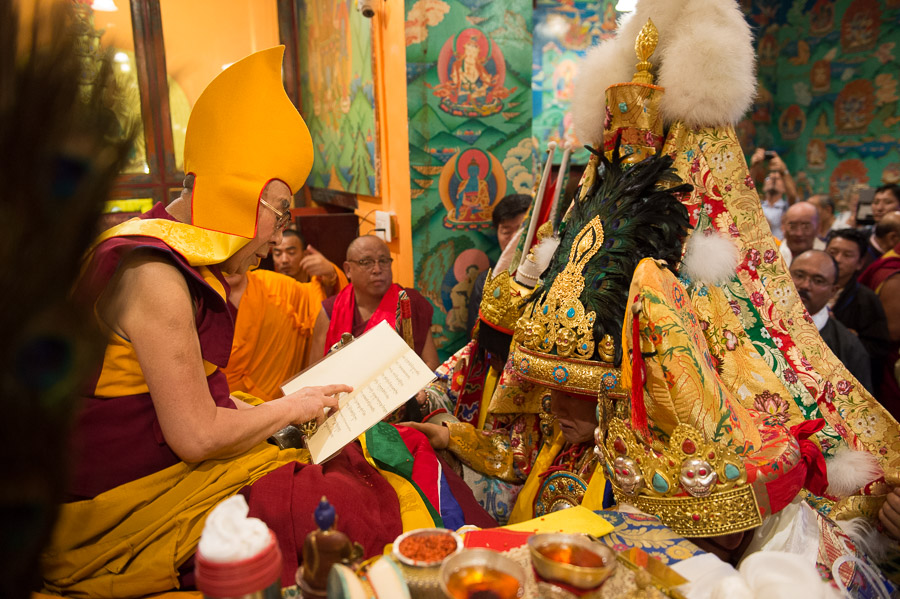
It is one thing to rely on Nechung for spiritual advice, but to subject all Tibetans to Nechung’s political advice or force them to rely on the Buddhist tradition of oracles (when not all Tibetans are Buddhist), is downright undemocratic, unfair and unconstitutional.
It is one thing to rely on oracles for spiritual advice, but for the entire Tibetan leadership to be given political direction by unseen beings has no place in a modern democratic society. Amongst the Tibetans, there are many non-Buddhists, for example Tibetan Christians, Tibetan Muslims and Tibetan Bonpos, and all of them may not necessarily appreciate being told what to do by an unenlightened spirit. Why, therefore, are the Tibetan leadership subjecting all of their people to the prophecies of these beings? How come Tibetan Christians, Muslims and Bonpos are having their lives and their futures dictated by spirits like Nechung?
No other government in the world relies on oracles for their decision-making. Not even neighboring Bhutan, who is also Buddhist, relies on oracles for political decisions of the state. Truth be told, it may be one of the reasons why Bhutan remains independent and continues to flourish to this day.
Motivated by Money?
All of this begs the question – if Nechung is so unreliable and if his advice has not improved the Tibetan situation, and if there is no benefit in relying on him, then why even bother? The answer lies in the way in which the Tibetan government promote and talk about Nechung.
For Western audiences who appreciate the concepts of democracy, equality and political transparency, the Tibetan leadership will downplay Nechung’s role in their decision-making process. This is in stark contrast to their treatment of Nechung in the early days of their time in exile. Back then, the CTA were keen to highlight the more esoteric processes of their governance. It somehow made them special, different, compared to other refugees and it was this unique aspect of Shangri-la that appealed to many of their early supporters. Over time, having realized how much the wider community disapproved of their reliance on oracles for state decisions, the Tibetan leadership have worked hard to draw attention away from this fact.
In the past, the Tibetan leadership’s own website had articles that spoke glowingly of Nechung, even referring to him as the Dalai Lama’s minister or a member of the Dalai Lama’s cabinet. These days, if you try to access those articles, you are met with an error of “Page Not Found”.
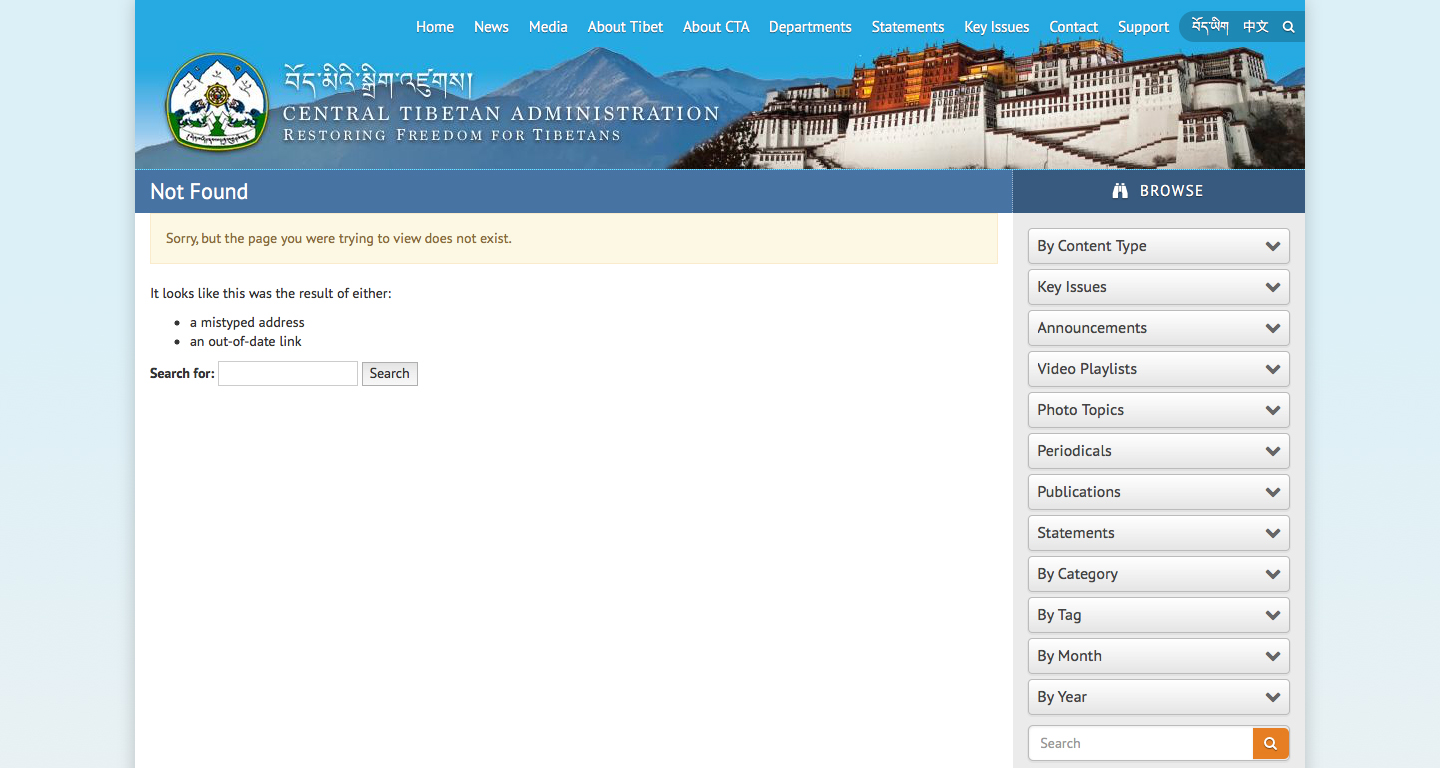
This is what happens when you go to the CTA’s official website to read about what the Dalai Lama said regarding Nechung. Why go through all the trouble of removing the article so completely from the Internet, if not because they wish to hide what it says? (Source: http://tibet.net/buddhism/nechung_hh.html)
The Tibetan leadership took great pains to delete all traces of these articles, and invested quite a bit of effort to distance themselves from these proclamations. Luckily, hard copies of this evidence continues to exist. In the July-August 1992 issue of the Tibetan Bulletin, a feature spread on Nechung was published. In it, the Dalai Lama was quoted as referring to Nechung as his cabinet minister. The Tibetan Bulletin is the Tibetan leadership’s own publication, and in the article Nechung was painted as someone as crucial and indispensable to the Dalai Lama as his publicly elected officials. You can click here to download a copy of the publication.
It is precisely this kind of promotion of Nechung which Westerners, who provide the bulk of the Tibetan leadership’s funding, are wary of. But it is this kind of promotion of Nechung which leads Tibetan audiences to follow Nechung’s prophecies unquestioningly.
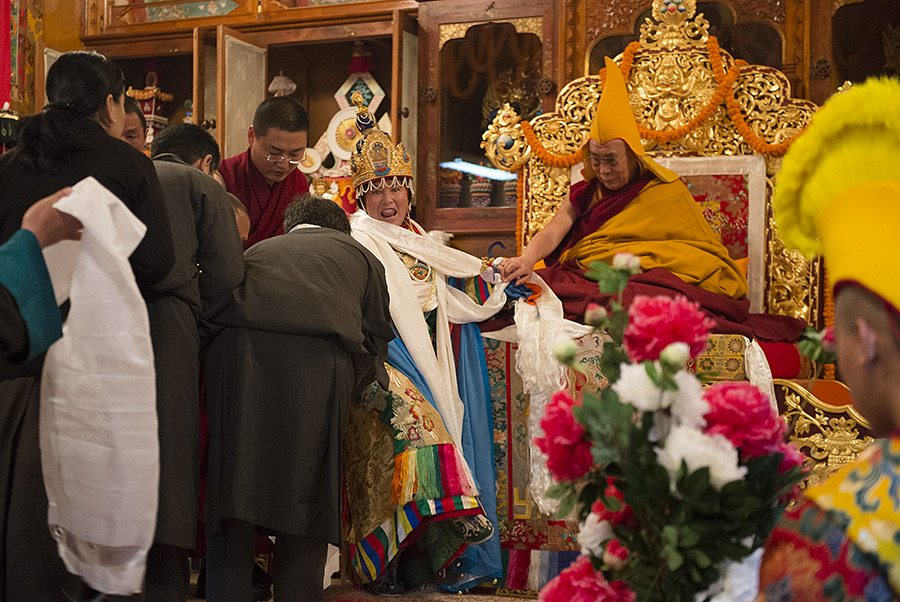
The Tibetan leadership’s reliance on its State Oracles is encouraged by the Dalai Lama, who is frequently seen with them, thus legitimizing their status.
To Tibetan audiences, the Tibetan leadership boosts Nechung’s role, hinting that it is somehow bad karma to go against his prophecies. The Tibetan leadership works hard to draw a picture of closeness between the deity and the Dalai Lama. It is hardly surprising therefore, that the Tibetan leadership have been known to use Nechung’s proclamations to pursue their personal interests. The manipulation of Nechung’s position in Tibetan society is designed so that the wider public will ignore the government’s transgressions, and allow the leadership to justify their self-serving behaviors, all of which are designed to increase their bank balances.
After all, how can the public comment on any of the government’s decisions, when those decisions are being made by a formless being whom no one can hold accountable? Even more so when the Dalai Lama refers to Nechung as a member of his Cabinet or his Minister. It leads the Tibetan public to immediately assume that going against Nechung’s prophecies or questioning them, is akin to going against the Dalai Lama and questioning him, since monk and oracle are very close. Within Tibetan society, to be viewed as anti-Dalai Lama immediately invites violent retribution and repercussions. Just look at what happened to the Member of Parliament Tenpa Yarphel when he questioned Nechung in the Tibetan Parliament. Since then, he has been labelled anti-Dalai Lama and anti-Tibet, and called all manner of vulgar names and profanities.
On reviewing the situation, it is obvious that the Tibetan leadership’s changing treatment of Nechung is motivated by only one thing – MONEY. By changing how they refer to Nechung, they can placate donors from different backgrounds and therefore upkeep the financial support from happy sponsors flowing into their coffers.
Conclusion
Hand in hand with this unreliable and inconsistent government is their dependence on a deity who has been proven time and again to be unreliable. In light of this situation, what chances do the Tibetan people have of fulfilling their political goals?
In the 60 years since the Tibetans went into exile, their position has not improved. Aside from the Dalai Lama, there are no famous Tibetans or world renowned Tibetans. Tibetans as a whole are no closer to achieving their political aims, and continue to languish in exile waiting and hoping for a breakthrough with China. Dialogue with China has in fact stagnated, with no signs of resuming any time soon and none of the Tibetan leaders have shown any signs of being capable of reinitiating this dialogue.
All this while, in a clear example of misplaced trust, the Tibetan people pin their hopes on an unseen deity whose political advice is interpreted and disseminated by a leadership who have been shown to be motivated by self-benefit. Indeed, to analyze the Tibetan situation is to analyze a sorry state of affairs, one that is underwritten by greedy ambition. If the Tibetans do not want to spend the next 60 years lamenting their situation, all signs point to an urgent need for a new way of decision-making and perhaps even a new wave of decision-makers. It is the only way they will ever be able to break away from the failures of their past.
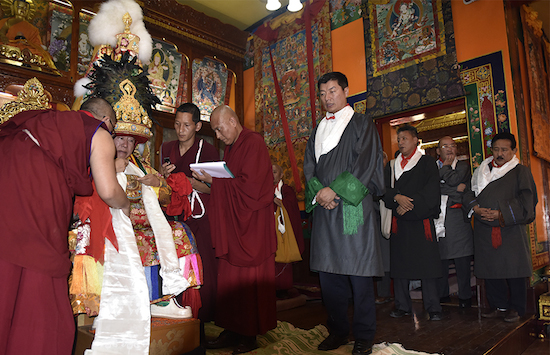
The Tibetan leadership are known to heavily rely on the advice of the State Oracles for their political decision-making. Seen here is the Tibetan Prime Minister Lobsang Sangay waiting to receive guidance from Nechung.
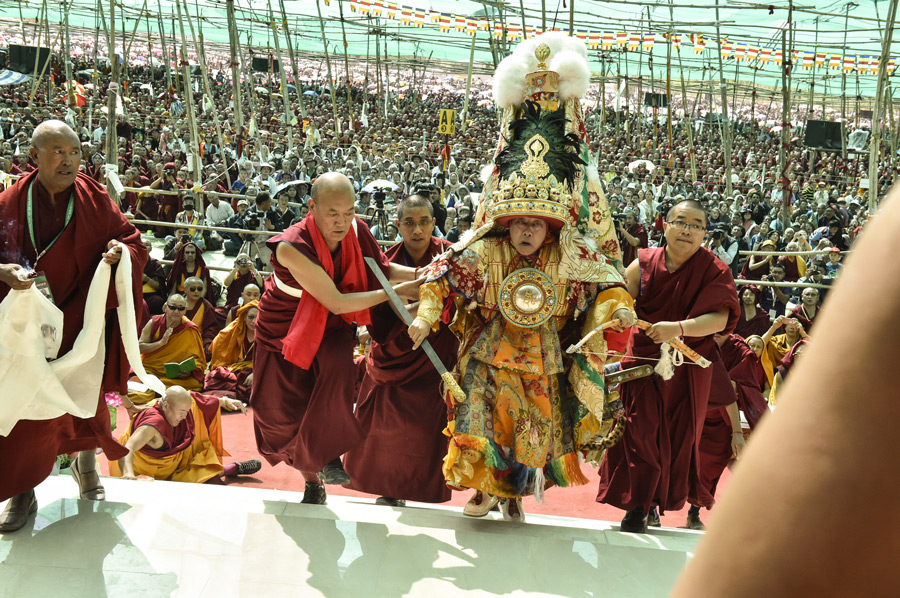
The State Oracles and their trances often take precedence at official events and state affairs, in front of thousands of Tibetans who witness the Dalai Lama and the Tibetan government receiving the oracles’ advice over and over again.
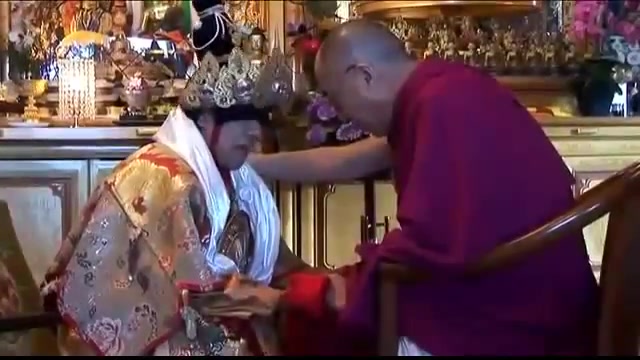
The Dalai Lama has such a close relationship with the oracles, and relies so heavily on the deities that he has even been pictured inviting them into his private quarters to take trance.
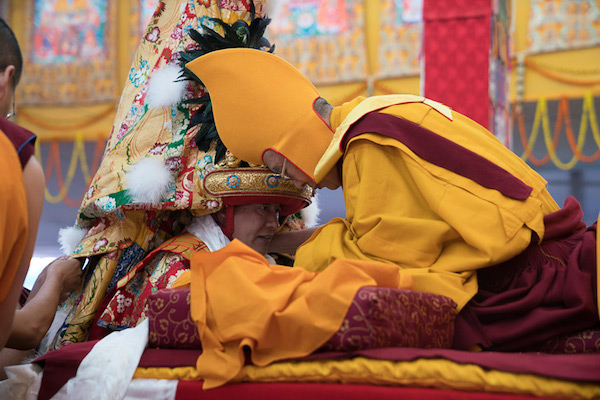
For decades, Tibetans have witnessed the Dalai Lama and the Tibetan leadership form a very close relationship with the oracles, whom they rely heavily upon for all matters political.
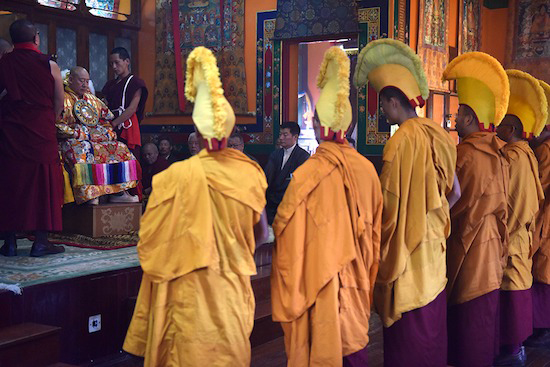
The Tibetan Prime Minister Lobsang Sangay is seated in the background, patiently waiting for an audience with Nechung
MORE NEWS LIKE THIS